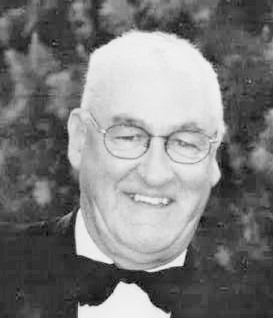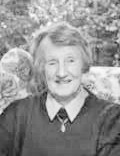How it all began…
Hospice care has been around in Great Britain since early 1880’s with the modern hospice movement starting with Dr Cecily Saunders in the 1960’s. At the same time Dr Elizabeth Kubler Ross was beginning her famous studies with dying patients which resulted in her pioneering book “On Death and Dying” (1969).
Before Hospice Whanganui provided care to the terminally ill patients in our community, many patients would inevitably spend their last days/weeks in hospital. 70% of terminally ill deaths occurred in hospital. One of the main torments suffered by a dying person in hospital, in those days, was the sense of isolation and loneliness and the separation from all that was familiar to them.
Wanganui’s hospice service was founded by the Wanganui Hospital Board, but right from inception the aim was to locate the service in the community, not in the hospital.

1972
Betty Bourke (Wanganui Base Hospital) travelled to USA and England to look at palliative (hospice) care. After attending a seminar on Hospice Care let by Dame Cecily Saunders this then began a personal campaign to establish hospice care in Wanganui.
1973
Mr Jonathan Hartfield organizes seminars on the topic of dying in hospital. Outcomes from the seminar was that patients should be told the truth about their condition.

Up until then, many doctors were reluctant to tell their patient they were dying. Another outcome was for relaxed visiting hours and pain killers/morphine to be used more liberally to manage symptoms and pain, rather than set at a regimented routine.
1976 – 1985
Beds were made available in Newcomb Ward at Wanganui Hospital specifically for the terminally ill. This meant that families could come and spend extended periods of time with their loved one assisting with their care. These patients were looked after by the local GP’s, Mr Dickson and a dedicated nursing team trained in palliative care.
1980
The hospital board agrees to investigate the feasibility of establishing hospice care in Wanganui. Betty chairs this committee.
Betty Bourke (chair of Hospital Board) and Mr Jonathan Hartfield (Medical Superintendent) became the driving force to enable the change on how the terminally ill were cared for – “to live until the day you die” (prof. Kubler Ross).
1980
Wanganui Regional Hospice Service is established (an incorporated society) formalised 1981 but had been running informally since 1980. Wanganui Base Hospital district nurses provide care to terminally ill patients in the home from 8am to 10pm seven days per week. A 2 bed facility at the Wanganui Base Hospital is available in the medical ward for those patients who require 24 hour short term care.
1984
At this point in New Zealand history, there is no national policy on caring for the terminally ill in New Zealand. The Minister of Health (Mr Gair) sets up a committee under the Wellington Health Services Advisory Committee to advise on a regional structure.
1985 – 1995
Patients continue to be cared for by Hospital district nurses during the day. Dr Elizabeth Williams, Mr Dave Dickson, trained palliative care nurses and Wiki Alward continuing hospice care and support for overnight care.
1989

Tom Joll (General Manager of Wanganui Base Hospital) was appointed a committee member of the Wanganui Regional Hospice Service. This service was looking after patients at the hospital and in their homes.
1991
Tom Joll appointed Hospice Manager – his vision to have a separate integrated specialist facility outside the hospital was put in action.
1995
Richmond House on Anzac Parade was leased to provide a base for palliative care to the terminally ill. Initially Richmond House was used as a day centre eventually gaining one bed space for those who needed 24 hour care. Later on Richmond House was a 3-bed inpatient facility.
It was agreed that this facility was not going to be able to provide the full service. Either another building or land was to be purchased for a dedicated integrated hospice service.
1997

After starting negotiations in 1990 the Wanganui Regional Hospice Service gets agreement from the Regional Health Authority to fund 50% of the Hospice budget, thanks to Tom Joll (CEO) and Rev. Leta Hawe (chair).
Jonathan Hartfield and David Dickson appointed medical officers for Wanganui Regional Hospice Service.
1998
2.5 hectares of land on Virginia Road was purchased from Miss Barbara Stewart for $100K. This purchase was possible due to a grant of $300K from Trust Bank Wanganui Community Trust.
1999
Wanganui Regional Hospice Service changed its name to Hospice Wanganui and became a charitable trust. 100 Patients are under the care of the Hospice Wanganui this year.
Bruce Dickson from Dickson Lonergan starts the design on the new Hospice building after looking at several Hospices throughout New Zealand. The cost of the new building is $1.8 million. Tom and Alan Burnet’s driving force with the support of a dedicated committee was to ensure that before building work commenced all the funds would be raised, as there was to be no debt.
2000
Almost $1 million raised toward the cost of the new building.
2001
Building work commenced.
Sandy Dobbin launches Hospice Foundation which was assisted by a significant legacy from Rev. Leta Hawe’s estate.
2002
Dame Catherine Tizard (Patron of Hospice at the time) opens the Hospice building at 78 Virginia Road April 2002.
Hospice Shop Alma Road opens, thanks to the support and commitment of people such as Alan Burnet.
2005
Farming Friends of Hospice Whanganui grazing scheme established.
2008
The shop in Alma Road relocates to Tawa Street, Gonville. Since then two other shops have opened in Wanganui East and Victoria Avenue. The shops continue to be a significant fund raising avenue contributing toward 30% of the overall operating cost of Hospice Whanganui.
2018
Due to a large bequest from Alan and Fleur Erson further work was completed on the existing building on Virginia Road. This work included extending the building to accommodate a meeting room, two offices and a clinic room. The car park area was also extended. Small but significant modifications were also undertaken in the nurses’ station.
Lest we forget…
Without Betty Bourke (who was awarded QSM in 1977, CBE in 1988), Mr Jonathan Hartfield, Tom Joll, Rev. Leta Hawe, the dedication and commitment of each successive committee and chair, Wiki Alward (first principal nurse), hospital district nurses, Mr Dave Dickson, Lindsay Watson, and some extraordinary volunteers such as David Bebarfald & Margaret Rowan we wouldn’t have the service as it is today. Everyone involved in getting our terminally ill patients out of hospital care and into specialist palliative care with a purpose built facility have much to be proud of.
